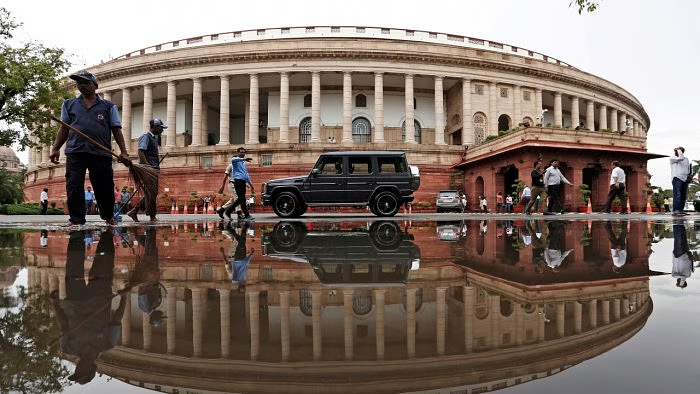India’s Bureaucratic Reforms (1991): Liberalisation and Economic Growth
Introduction
India’s economic liberalisation in 1991 marked a watershed moment in the country’s developmental trajectory. Confronted with a severe balance of payments crisis and dwindling foreign exchange reserves, the Indian government—led by Prime Minister P. V. Narasimha Rao and Finance Minister Dr Manmohan Singh—undertook sweeping structural reforms. These reforms aimed to transition India from a protectionist, state-controlled economy to a more liberalised and market-oriented system. While the reforms are widely credited with catalysing rapid economic growth and global integration, they also exposed challenges related to governance, inequality, and regulatory capacity.

Origins and Objectives
Prior to 1991, India’s economic model was dominated by the Licence Raj, characterised by state monopolies, protectionist trade barriers, and bureaucratic control over business activity. By the late 1980s, rising fiscal deficits, poor industrial productivity, and a foreign exchange crisis made reform unavoidable.
The principal objectives of the 1991 reforms were to:
- Dismantle the Licence Raj, simplifying regulatory approval and eliminating bureaucratic delays.
- Encourage foreign direct investment (FDI) and capital inflows by easing restrictions on ownership and repatriation.
- Privatise and deregulate state-owned enterprises, fostering competition and operational efficiency.
- Integrate India into the global economy, shifting from inward-looking planning to outward-oriented trade.
The reforms were influenced by neoliberal economic thinking, supported by International Monetary Fund (IMF) and World Bank conditionalities.
Implementation and Key Policies
1. Trade Liberalisation
Import quotas and tariffs were drastically reduced, replacing quantitative restrictions with moderate, transparent tariff structures. India adopted a market-determined exchange rate, making its currency more competitive.
2. Financial Sector Reform
Reforms included deregulation of interest rates, the modernisation of capital markets, and increased autonomy for the Reserve Bank of India (RBI). The entry of private and foreign banks introduced competition and diversified financial services.
3. Industrial and Investment Policy Reforms
Industrial licensing was abolished for most sectors, encouraging entrepreneurial activity. The cap on foreign equity participation was raised, and restrictions on technology transfer were eased.
4. Public Sector Reform and Privatisation
Government disinvestment programmes were launched to reduce the fiscal burden of loss-making public sector undertakings (PSUs). Emphasis was placed on strategic disinvestment, rather than wholesale privatisation.
Economic Consequences
1. Accelerated GDP Growth
India’s GDP growth rate rose significantly in the post-reform period. From an average of 3.5% (“Hindu rate of growth”) in the pre-reform era, India achieved annual growth rates of 6–8%, transforming it into a major emerging market.
2. Services Sector Expansion
Liberalisation fuelled the growth of the services sector, particularly in information technology (IT), telecommunications, and financial services, making India a hub for global outsourcing.
3. Foreign Investment and Global Integration
FDI inflows increased sharply, strengthening India’s position in global supply chains. India became a member of the World Trade Organization (WTO) in 1995, formalising its commitment to open trade.
4. Growing Inequality and Regional Disparities
Despite overall growth, income and regional inequalities widened. Urban and coastal states benefitted more from reform, while rural and underdeveloped regions struggled to keep pace. Informal sector workers faced limited protections during economic transition.
Political and Public Response
1. Political Endorsement and Continuity
Successive governments—regardless of ideological orientation—continued with liberalisation, suggesting broad political consensus on economic reform. However, privatisation remained politically contentious, especially regarding strategic sectors.
2. Public Dissent and Labour Resistance
Trade unions and public sector employees opposed reforms, citing job insecurity, wage stagnation, and erosion of social protection. Farmers also expressed concerns over global price volatility and reduced subsidies.
3. National Identity and Economic Sovereignty Debates
Critics expressed concern over the perceived loss of economic sovereignty and dependency on foreign capital. Nationalist discourse framed liberalisation as compromising India’s autonomy and developmental ethos.
Conclusion
The 1991 reforms represent a paradigm shift in India’s economic philosophy, transitioning from statism to market-led development. They succeeded in stabilising the macroeconomic environment, improving efficiency, and opening new avenues for growth. However, they also introduced new challenges, including rising inequality, governance deficits, and regulatory fragmentation.
As India aspires to become a $5 trillion economy, the legacy of the 1991 liberalisation continues to inform contemporary debates on reform, development, and inclusion. A renewed focus on institutional capacity, social safety nets, and balanced regional development remains essential to fulfilling the transformative potential of India’s post-reform trajectory.
Would you like this article formatted for your website or adapted into a comparative study with another post-socialist or emerging economy?